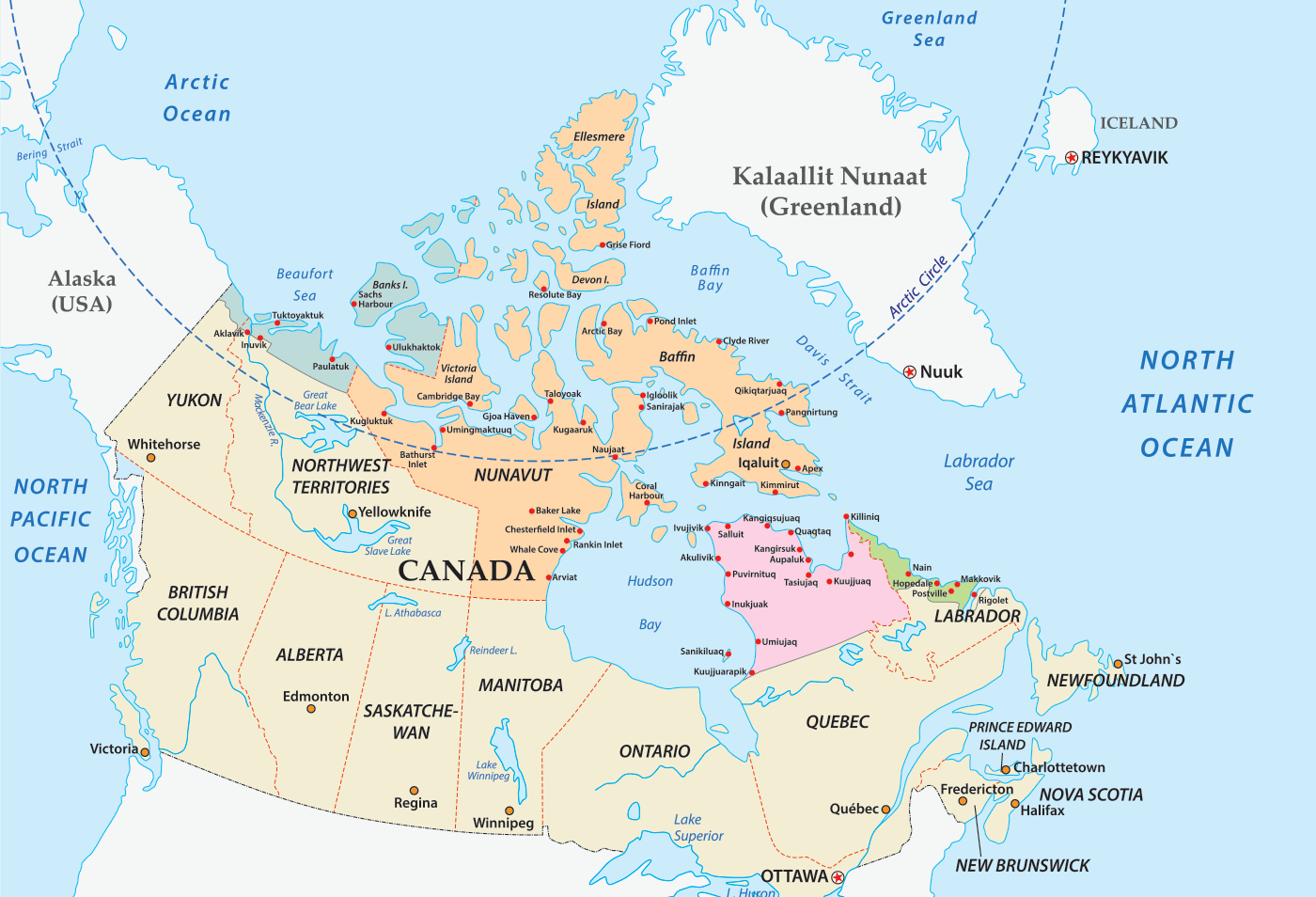Canada
Need Subheading Here
The second largest country in the world by land area, Canada consists of ten provinces and three territories, which stretch from the Atlantic to the Pacific and northward into the Arctic Ocean. Canada has been inhabited by Indigenous peoples for thousands of years. From the 16th century onward, British and French settlers arrived. Canada is officially a bilingual country with English and French both having official status. The newest Canadian territory is Nunavut, which separated from the Northwest Territories on April 1st, 1999. It is also Canada’s largest, northernmost, and least populous territory.
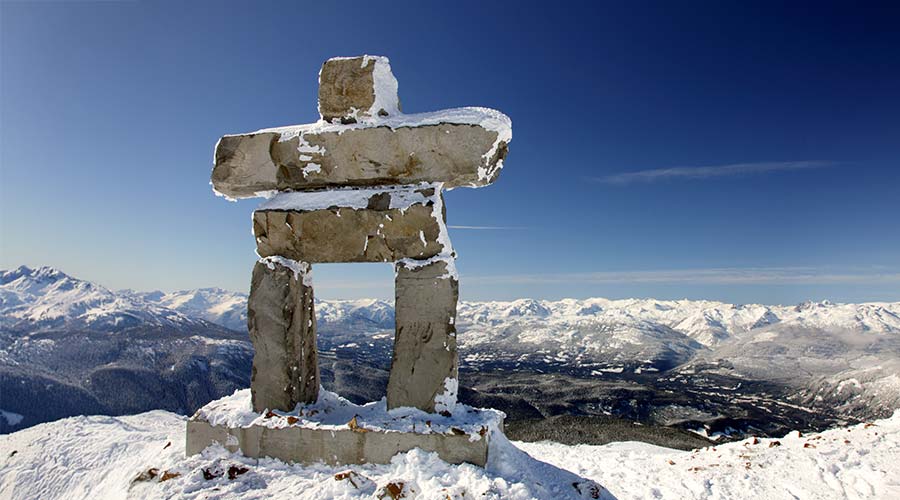
A History Shaped by Exploration
Jan Mayen’s history is largely characterized by whaling and sealing expeditions. The island was first discovered by Dutch whaler Jan Jacobszoon May van Schellinkhout in 1614, after whom it is named. It became a Dutch whaling base, and several whale oil boilers were established to extract oil from whale blubber. As a result of the extensive hunting, the Greenland whale was driven to the brink of extinction, and the whaling operations in Jan Mayen came to an end in 1650. It was then left vacant for the next 200 years.
Its remoteness and harsh environment meant it remained largely uninhabited for centuries, only recently becoming more significant due to its meteorological importance and use by the Norwegian Armed Forces. The settlement of Olonkinbyen was established to house the personnel responsible for maintaining the island’s infrastructure and weather stations, a vital part of Arctic weather forecasting.
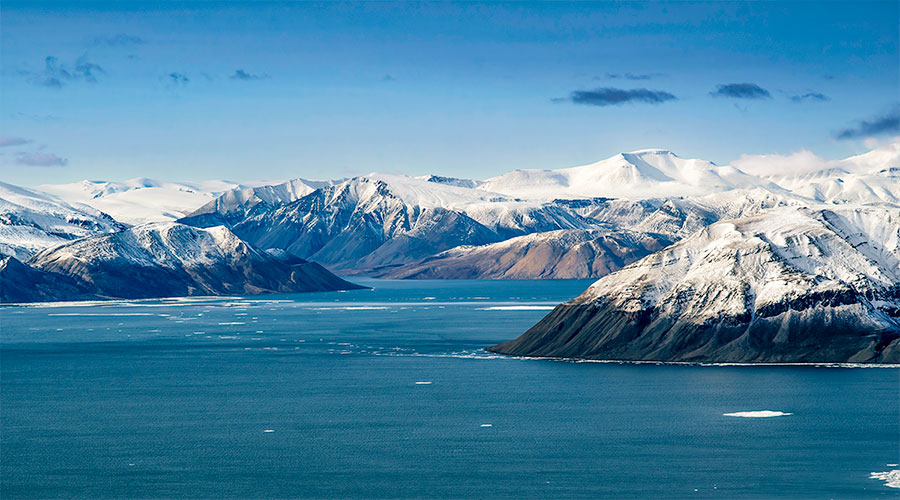
A Vast, Record-Setting Geography
Canada stretches from the Atlantic to the Pacific Ocean and all the way up into the Arctic. It has the world’s longest coastline, at almost 250,000 kilometers, and also has the longest land border in the world, an almost 9,000 km long frontier with the United States. Canada spans 41.5° of latitude – more than any other country. Canada’s northern regions are characterized by a mixture of land and sea, while the Canadian Arctic Archipelago contains three of Earth’s ten largest islands. Baffin Island alone covers 507,000 square kilometers – more than twice the size of Great Britain!
In the north, vast tracts of land are permanently icebound, yet the majority of the world’s liquid fresh water can be found in the 2,000,000 lakes scattered across Canada’s vast landscape.
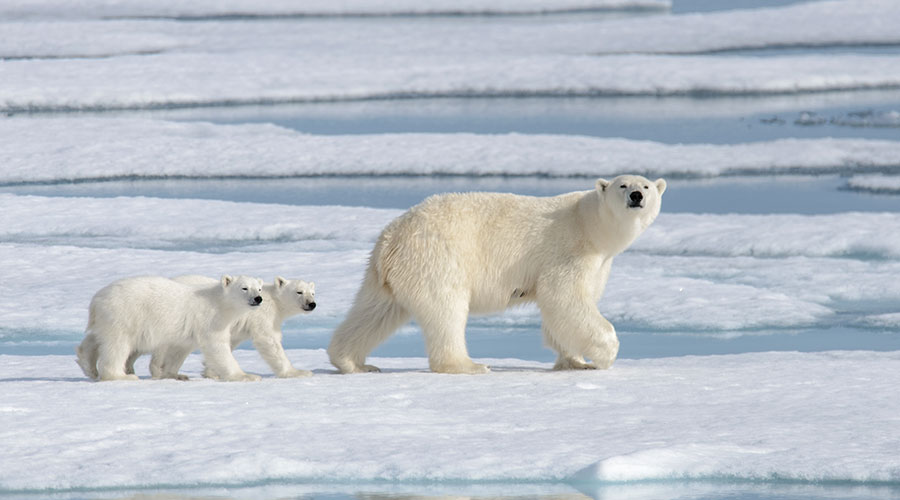
Resilient Wildlife
This remote region, with its expansive tundra, icy waters, and towering glaciers, is home to some of the most resilient species on Earth. Whether you’re hoping to catch a glimpse of the elusive Arctic fox or watch a pod of narwhals surface through the icy waters, Arctic Canada offers a window into a world where nature reigns in its purest form.
Arctic Canada is one of the best places in the world to see polar bears in their natural habitat. Polar bears are most commonly found on the shores of Hudson Bay, Baffin Island, and along the Arctic coastline. The population is estimated to be around 15,000 bears, about two-thirds of the world’s polar bears.
Arctic Canada is also home to a variety of seabirds, including the thick-billed murre and the northern fulmar, which nest in large colonies on cliffs during the summer months. In the warmer months, migratory birds like the snowy owl and Arctic tern return to breed. The Arctic tern makes one of the longest migrations of any bird, flying from the Arctic to the Antarctic and back each year.
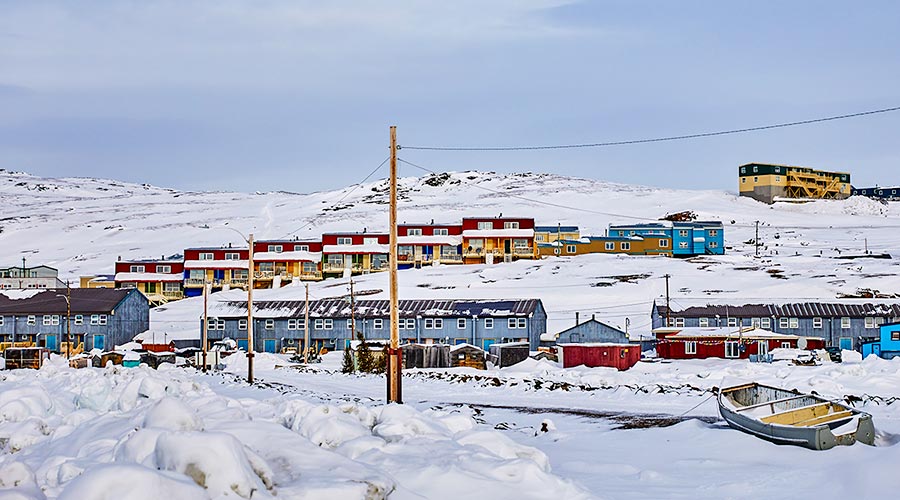
Canada Is Known for Its Harsh Winters
The climate of the Canadian Arctic is characterized by long, brutally cold winters and short, cool summers. Iqaluit, Nunavut’s capital, has an average July temperature of 12°C (54°F) and a February average temperature of -32°C (-25°F).
Expeditions That Include the Canadian Arctic
Note:
We could potentially feature all the Canadian Arctic trips here once they are all built – by saving each as a global template, maybe?

